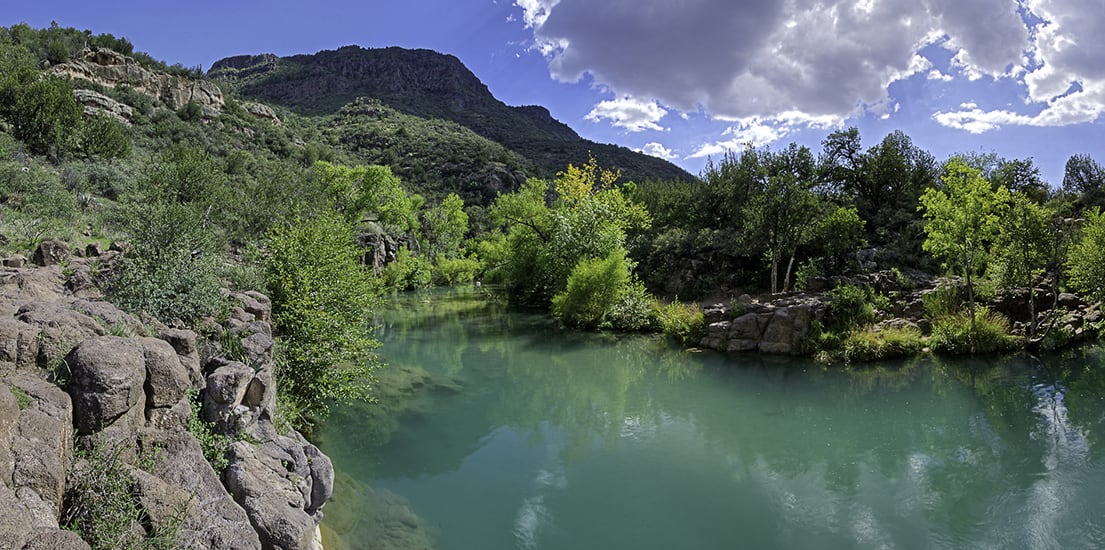It’s official: Western Rivers Conservancy purchased the last piece of unprotected land along Arizona’s Fossil Creek, a tributary to the Verde River and one of only two Wild and Scenic Rivers in the state. WRC intends to convey the property to the Coconino National Forest for inclusion and protection within the Wild and Scenic River corridor, affording these vital riverlands one of the best protections a river can get.
Fossil Creek rises from a series of mineral springs in central Arizona’s Mogollon Rim, and its high mineral content creates slick limestone formations and spectacular blue-green travertine pools throughout much of its length. Within the arid landscape of the Sonoran Desert, Fossil Creek is an oasis, providing important habitat for rare native fish, beavers, otters, leopard frogs, bats and an extraordinary array of bird species. The creek is home to nine native fish species and plays a vital role within the greater ecosystem of the Verde River, Arizona’s other Wild and Scenic River.
Looking at the stream today, you’d likely never notice that Fossil Creek was dewatered by a hydroelectric project for nearly a century. During that time, the creek was reduced to a trickle, and riparian and stream habitat were degraded throughout much of the basin. Then, beginning in 1999, state and federal agencies and restoration groups embarked on what would become the largest river recovery effort in the Southwest. In 2005, following six years of hard work, the diversion dam was removed from the stream, and Fossil Creek became a wild, free-flowing river once again. Four years later, Congress designated 17 miles of the stream—nearly the entire river—Wild and Scenic, making it the second Wild and Scenic River in all of Arizona.
WRC’s purchase of this property will improve the integrity of both the Fossil Creek and Verde scenic river corridors and conserve prime habitat within the Verde River basin. And, as more and more people discover and visit Fossil Creek, WRC’s efforts will help Coconino National Forest ensure public access while minimizing impact on this fragile desert ecosystem.


